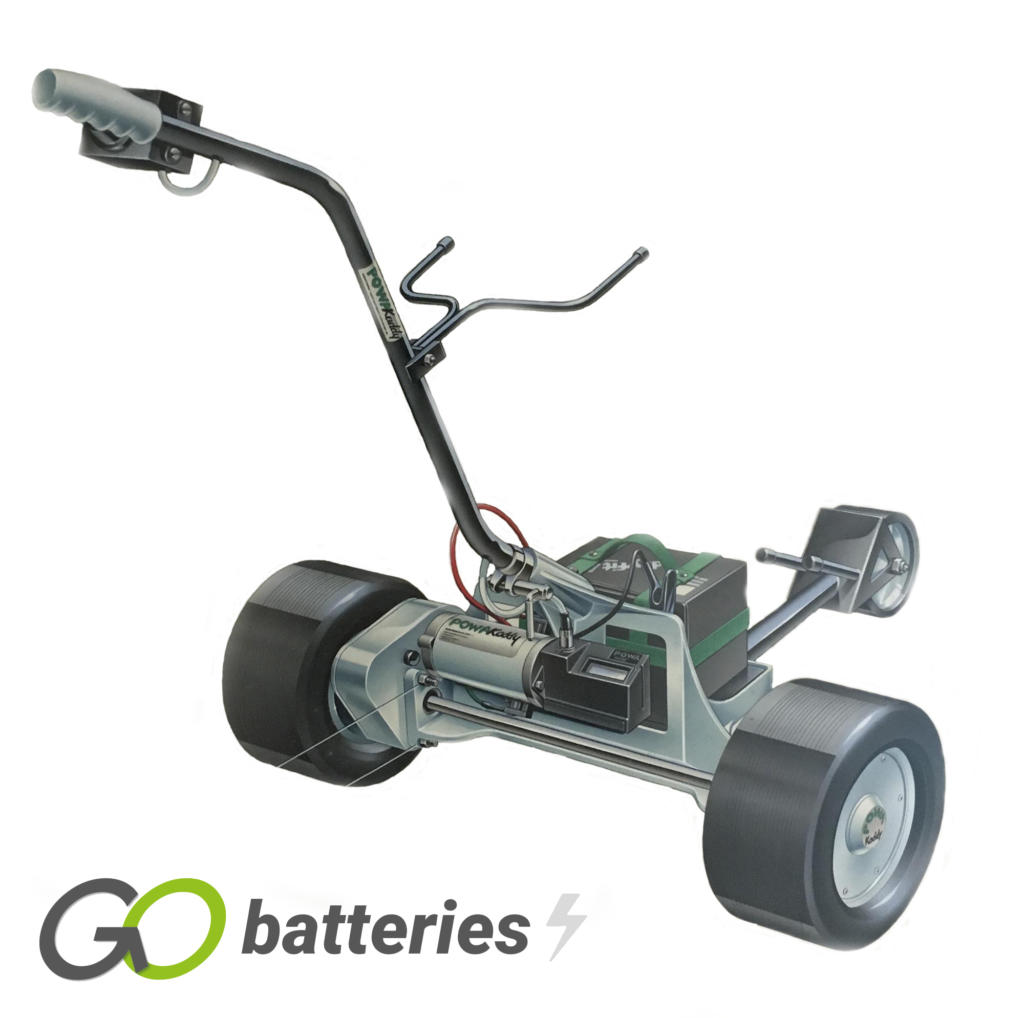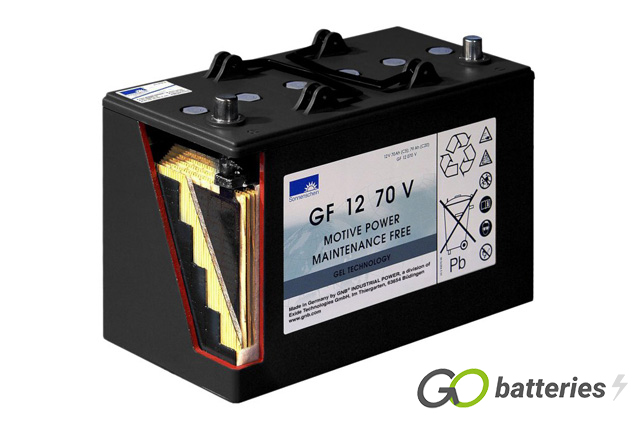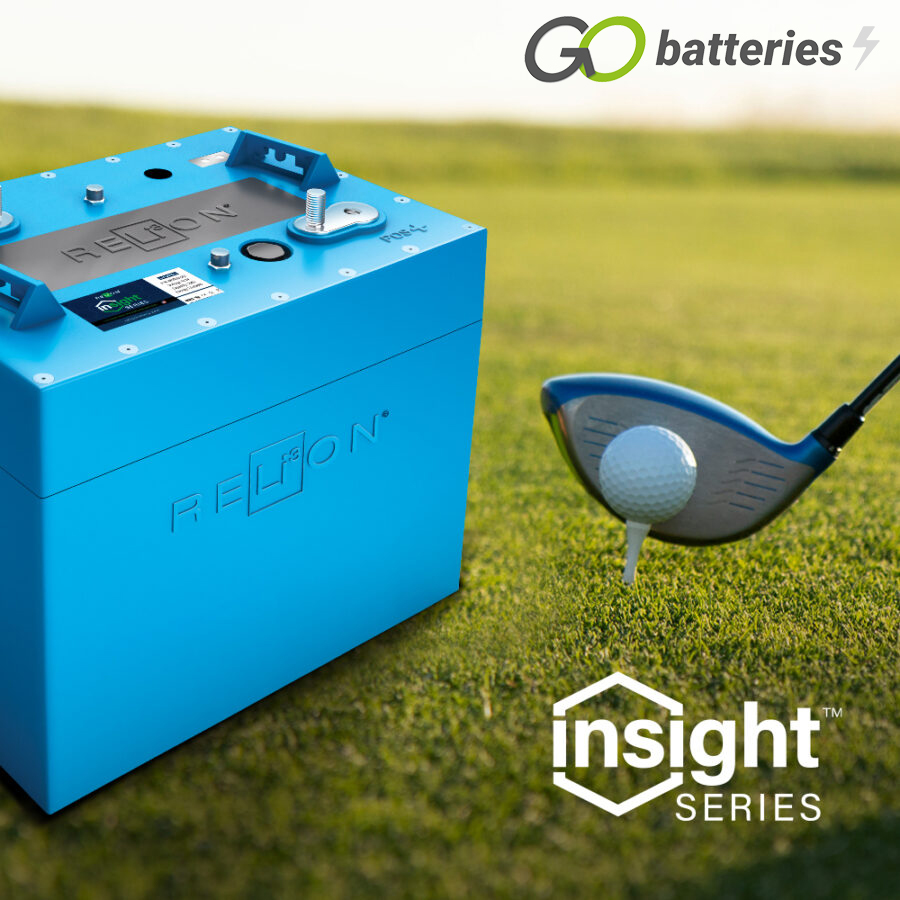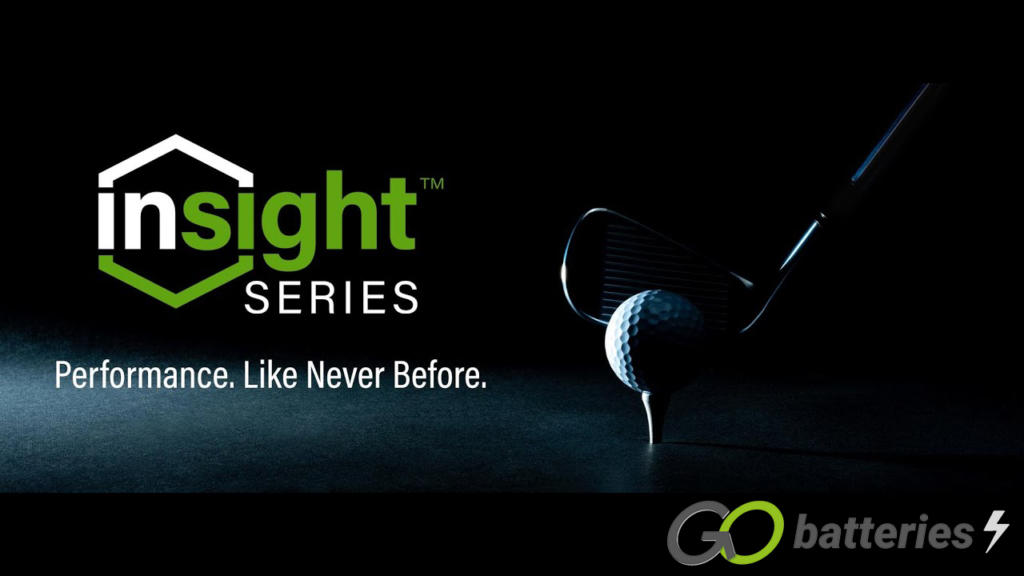
Golf Battery Care & Maintenance
The right care is essential to maximise the life of your Golf battery
All batteries can fail prematurely for a number of reasons and golf batteries are no exception, the most common factors being:
- Incorrect charging regime which either over or under charges the battery.
- A faulty charger, if your charger is over five years old and has been used regularly, (say twice a week) you would be advised to get the charger tested and replaced if necessary.
- Excessive demand from the motor caused by overloading or axles not rotating freely, always make sure that the equipment the battery is being used on is clean and properly maintained.
- Accidental damage such as dropping it, always handle your battery with care.
- Leaving the battery for long periods of time without charging it or leaving it in a discharged state.
- Using the battery for longer than it’s recommended capacity.
AGM Golf Trolley Batteries
AGM golf batteries can be charged on any modern standard intelligent battery charger as this technology accommodated in their basic settings. You may ask yourself, do I need to recharge my battery today as I only played 6 holes? A battery should always be charged after you have played to make sure it’s ready for the next time it needs to be used. It is not designed to be used day after day without charging as this will reduce the capacity of the battery and reduce the life expectancy.
If you are not going to be using the battery for a prolonged period then firstly, charge the battery fully before storing it and recharge the battery every few weeks to keep it in peak condition. Please do not leave your battery on charge or connected to the charger once it has been fully charged, disconnect the battery once fully charged and should you not use the battery for a few weeks then you can repeat the charging process.
AGM batteries should always be kept clean and free of dirt and corrosion at all times.

Gel Golf Trolley Batteries
Gel golf batteries tend to need a little more care when it comes to choosing a battery charger. As with the AGM battery above, a good quality modern intelligent battery charger will usually have a mode for charging Gel batteries, if you are unsure whether your battery charger has this ability then please consult your battery charger manual. Don not charge your Gel battery with the incorrect battery charger. A battery should always be charged after you have played to make sure it’s ready for the next time it needs to be used. It is not designed to be used day after day without charging as this will reduce the capacity of the battery and reduce the life expectancy.
If you are not going to be using the battery for a prolonged period then firstly, charge the battery fully before storing it and recharge the battery every few weeks to keep it in peak condition. Please do not leave your battery on charge or connected to the charger once it has been fully charged, disconnect the battery once fully charged and should you not use the battery for a few weeks then you can repeat the charging process.
Gel batteries should always be kept clean and free of dirt and corrosion at all times.

Lithium Golf Trolley Batteries
Lithium golf batteries must be charged on a Lithium battery charger, so if you are purchasing a Lithium golf battery for the first time please ensure you have the correct battery charger. If you are unsure whether your battery charger has the ability to charge Lithium batteries then please consult your battery charger manual, do not charge your Lithium battery with the incorrect battery charger.
Lithium batteries can be stored (charged) for a much longer period than their lead-acid equivalent and this can be a great feature for extending the life of your golf battery. If you are not going to be using your Lithium battery for an extended period, perhaps over the winter months, then please fully charge the battery prior to storage, this will mean the battery can happily sit for a few months without issue. Before using the battery again after storage, recharge the battery (this may not take too long, but always wait until the battery charger completes the charging cycle) prior to use, this will ensure smooth operation.
We recognise that extended absences are not always planned in advance and can come at short notice, however, when the possibility arises that your battery may not be used for some time it is good practice to follow these steps to extend the life of your Lithium battery. Always make sure the battery charger is disconnected from your battery after charging.
Lithium batteries should always be kept clean and free of dirt and corrosion at all times.

Deep Cycle Golf Cart Batteries
Golf cart batteries are deep cycle batteries, designed and built with additional durability to sustain prolonged current draw and frequent deep discharge. They usually come equipped in 6, 8 and 12-volt configurations that can be wired in series to provide the required voltage. An example of this is: six 6-volt batteries connected in series would provide 36 volts, six 8-volt batteries batteries would provide 48 volts, as would four 12-volt batteries.
Golf cart battery technology comes in much the same way as golf trolley batteries, AGM, Gel and Lithium options for golf trolleys. Golf cart batteries have the option of wet flooded batteries, AGM batteries and Lithium batteries and below we will help with how to care for these technologies.
Wet Flooded Batteries
Wet batteries offer technology which is the most economical to purchase but requires more monitoring during their service life. As with all batteries they need to be charged after use for best battery life, batteries should not be discharged below 80% of their rated capacity. Proper battery sizing will help avoid excessive discharge. Wet flooded batteries should always be checked to make sure the electrolyte is above the lead plates (always wear eye coverings and be very careful when checking electrolyte levels) prior top charging, if required, top up level with distilled water only (See Watering Deep Cycle Batteries). Once the batteries have been charged then check again to make sure the electrolyte level is above the plates. If you are not sure how to check the levels or have any concerns please seek the advice of your local professional.
When charging a bank of deep cycle batteries make sure you have the correct battery charger which is matched to charge the batteries in an eight hour period, defective and unmatched chargers will damage batteries or severely reduce their performance. As batteries age their maintenance requirements change, this means longer charging time and /or higher finishing rate (higher amperage at the end of the charge) and usually older batteries need to be watered (distilled water) more often and their capacity decreases.
In situations where multiple batteries are connected in series, parallel, replacement battery or batteries should be the same size, age and usage level as the companion batteries. Do not put a new battery into a bank which has 50 or more cycles, either replace all for new batteries or use a good used battery of approximately the same amount of cycles.
U.S. Battery Electric Vehicle Deep Cycle batteries have been engineered with the exclusive XC2™ formulation and Diamond Plate Technology®. This creates the industries most efficient battery plates, delivering greater watt-hours per litre and watt-hours per kilogram than any other flooded lead-acid battery in the market.
AGM Batteries
Absorbent Glass Mat is a class of lead-acid deep cycle battery which has the electrolyte absorbed in the fibreglass mat. The internal resistance of AGM batteries is lower than traditional cells, they can handle higher temperatures and self discharge more slowly. AGM batteries are spill proof, fully sealed and maintenance free, so unlike there wet flooded equivalent, there is no checking of water levels, ever. The charging requirements are much the same as the wet flooded batteries, but make sure you have the correct battery charger which is matched to charge AGM batteries in an eight hour period, defective and unmatched chargers will damage batteries or severely reduce their performance.
In situations where multiple batteries are connected in series, parallel, replacement battery or batteries should be the same size, age and usage level as the companion batteries. Do not put a new battery into a bank which has 50 or more cycles, either replace all for new batteries or use a good used battery of approximately the same amount of cycles.
U.S. Battery’s AGM Deep Cycle Batteries are engineered to deliver reliable deep cycling performance. The Absorbed Glass Mat (AGM) eliminates the possibility of spills and minimises the need for maintenance. In addition to designed-in vibration resistance and maintenance-free valve-regulated operation, U.S. Battery’s new AGM design improves reliability and overall performance and delivers longer cycle life. The sealed Maintenance-Free line is engineered to deliver a deep cycle cost effective alternative to Lithium batteries. Our AGM Deep Cycle batteries are developed in the U.S.A. and specifically manufactured for U.S. Battery under our guidelines assuring our customers they are being provided the highest quality AGM batteries available.
Lithium Batteries
Last significantly longer than lead-acid batteries because the Lithium technology increases the number of charge cycles. An average Lithium battery can cycle between 2,000 and 5,000 times, whereas the average lead-acid battery can last roughly 500 to 1,000 cycles. While Lithium batteries last far longer than lead-acid batteries they are also a fraction of the weight of lead-acid batteries, this helps with the overall performance of the vehicle.
Relion Lithium Batteries
The Best Lithium Golf Cart Battery – Our InSight 48V Lithium battery was designed specifically to meet the power and energy needs in all types of golf cars, utility vehicles, AGVs and LSVs. Not only does it fit like a glove, but the one-of-a-kind battery management system hosts an intuitive software, providing Bullseye Balancing™ between batteries, seamlessly manages regenerative currents and avoids unnecessary disconnects. Quality from the inside out, the InSight Series is truly a Lithium battery in a class of its own.

Deep Cycle Battery Maintenance and Care
- New batteries should be given a full charge before use.
- New deep cycle batteries need to be cycled several times before reaching full capacity (25-100 cycles, depending on type). Capacity will be limited during this period.
- Battery cables should be intact, and the connectors kept tight at all times. Always use insulated tools to avoid shorting battery terminals. Regular inspection is recommended.
- Vent caps should be correctly installed and tight during vehicle operation and battery charging.
- Batteries should be kept clean and free of dirt and corrosion at all times.
- Batteries should always be watered after charging unless plates are exposed before charging. If exposed, plates should be covered by approximately 1/8″ of electrolyte (add distilled water only). Check electrolyte level after charge. The electrolyte level should be kept 1/4″ below the bottom of the fill well in the cell cover. Click Here to see proper fill level.
- Water used to replenish batteries should be distilled or treated not to exceed 200 T.D.S. (Total Dissolved Solids…parts per million). Particular care should be taken to avoid metallic contamination (iron).
- For best battery life, batteries should not be discharged below 80% of their rated capacity. Proper battery sizing will help avoid excessive discharge.
- Battery chargers should be matched to fully charge batteries in an eight hour period. Defective and unmatched chargers will damage batteries or severely reduce their performance.
- Avoid charging at temperatures above 120 degrees F or ambient, whichever is higher. Deep cycle batteries need to be equalised periodically. Equalising is an extended, low current charge performed after the normal charge cycle. This extra charge helps keep all cells in balance. Actively used batteries should be equalised once per month. Manually timed charger should have the charge time extended approximately 3 hours. Automatically controlled charger should be unplugged and reconnected after completing a charge.
- In situations where multiple batteries are connected in series, parallel or series/parallel, replacement battery should be of the same size, age and usage level as the companion batteries. Do not put a new battery into a pack which has 50 or more cycles. Either replace all with new or use a good used battery.
- Periodic battery testing is an important preventative maintenance procedure. Hydrometer readings of each cell (fully charged) gives an indication of balance and true charge level. Imbalance could mean the need for equalising; is often a sign of improper charging or a bad cell. Voltage checks (open circuit, charged and discharged) can locate a bad battery or weak battery. Load testing will pick out a bad battery when other methods fail. A weak battery will cause premature failure of companion batteries.
- Always use a matched charger and battery pack system. Unmatched chargers will cause potential problems.
- As batteries age, their maintenance requirements change. This means longer charging time and/or higher finish rate (higher amperage at the end of the charge). Usually older batteries need to be watered more often…and their capacity decreases.
- Lead acid batteries should be brought up to full charge at the earliest opportunity. Avoid continuously operating batteries in a partially charged condition. This will shorten their life and reduce their capacity.
- Extreme temperatures can substantially affect battery performance and charging. Cold reduces battery capacity and retards charging. Heat increases water usage and can result in overcharging. Very high temperatures can cause “thermal run-away” which may lead to an explosion or fire. If extreme temperature is an unavoidable part of an application, consult a battery/charger specialist about ways to deal with the problem.
- Inactivity can be extremely harmful to all lead acid batteries. If season use is anticipated, we recommended the following:
- Completely charge the battery before storing.
- Remove all electrical connections from the battery, including series/parallel connectors.
- Store the battery in as cool a place as possible. However, do not store in a location which will consistently be below 32 degrees F. Batteries will discharge when stored, the lower the temperature the lower the self discharge.
- When not in use, boost every two months.
















